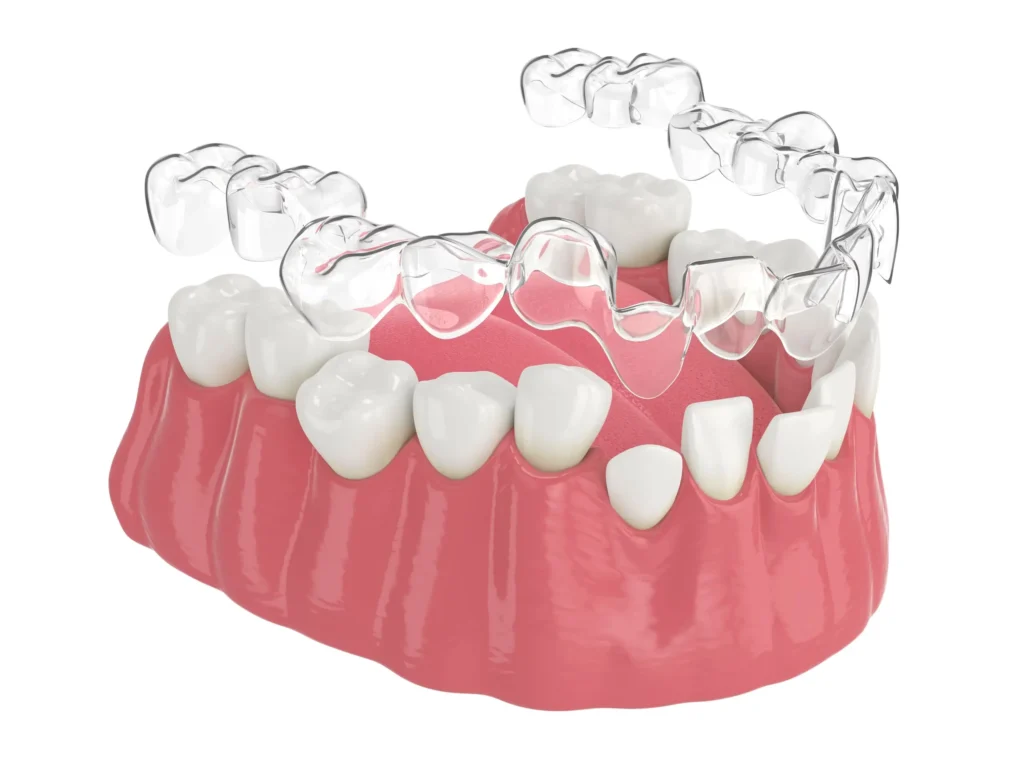The Ultimate Guide to Orthodontic Transparent Aligners
Orthodontic transparent aligners have revolutionized modern dentistry by offering patients a discreet, comfortable, and highly effective alternative to traditional metal braces. These custom-made, removable trays apply gentle pressure to gradually shift teeth into their desired positions, all without the need for brackets or wires. Whether you’re a working professional, student, or simply someone who values aesthetics and convenience, transparent aligners offer a seamless path to achieving a straighter, more confident smile.
This comprehensive guide explores every essential aspect of transparent aligners—from how they work and what they’re made of to their numerous benefits, the treatment process, and the types of dental issues they can resolve.

How Orthodontic Transparent Aligners Work
Transparent aligners are designed to move teeth in a precise and controlled manner using a series of clear plastic trays. Each aligner is slightly different from the last, and together, they guide your teeth through a series of small movements until the final alignment is achieved.
The Science Behind Clear Aligners
Understanding how aligners work requires a look into the biological and mechanical principles behind tooth movement:
- Gradual Pressure: Each aligner tray exerts controlled force on specific teeth to shift them incrementally.
- Sequential Movement: Patients typically switch to a new set of aligners every one to two weeks, with each set making slight changes to tooth positioning.
- Bone Remodeling: As teeth move, the surrounding bone adapts by dissolving in areas under pressure and rebuilding in areas of tension. This biological process is what allows long-term, stable changes in tooth alignment.
Customization Process
The success of aligner treatment depends heavily on personalized planning and precision engineering:
- 3D Scanning: Advanced digital impressions are used to capture the exact shape and alignment of your teeth.
- Treatment Planning: Specialized software simulates the entire tooth movement process and creates a digital model of the expected results.
- Aligner Fabrication: Once the plan is approved, a series of aligners is created using medical-grade plastic, custom-fit to your teeth at each stage of the journey.
Materials Used in Transparent Aligners
Aligners are designed with comfort, safety, and durability in mind:
- Polyurethane Plastic: A flexible yet sturdy material that can withstand daily wear without breaking or deforming.
- BPA-Free: Aligners are made from biocompatible materials that are free from harmful chemicals like Bisphenol A.
- Smooth Edges: The aligners are trimmed and polished to ensure they don’t irritate the gums, tongue, or inner cheeks.
Benefits of Clear Teeth Alignment with Aligners
Clear aligners offer a wide range of advantages over traditional braces, making them the preferred option for many patients seeking orthodontic treatment.
Aesthetic Advantages
- Virtually Invisible: One of the most attractive features of transparent aligners is that they are barely noticeable, allowing patients to smile confidently throughout treatment.
- No Metal Components: Unlike traditional braces, there are no brackets or wires to distract from your natural appearance.
Want to see why clear aligners are becoming the most popular choice in orthodontics? - Watch this video to learn more about how they work, their benefits, and why they might be the right option for you.
Comfort & Convenience
- Removable Design: Aligners can be taken out while eating, drinking, brushing, or flossing, making everyday activities easier and more enjoyable.
- Smooth Surface: Their soft, smooth surface minimizes the risk of cuts, sores, or discomfort inside the mouth.
- Fewer Dental Visits: Most aligner treatments require fewer in-office adjustments compared to traditional braces, saving time and reducing inconvenience.
Improved Oral Hygiene
- Easy Cleaning: Since aligners are removable, patients can brush and floss their teeth normally, reducing the risk of cavities and gum disease.
- Reduced Plaque Buildup: Without the brackets and wires of traditional braces, food particles are less likely to get trapped, leading to improved oral health during treatment.
The Invisible Braces Treatment Process
Transparent aligner treatment follows a systematic, well-structured process tailored to each patient’s dental condition and goals.
Step 1 – Initial Consultation
- A qualified orthodontist or dentist evaluates your dental health.
- Digital scans or impressions are taken to assess alignment issues.
- Your treatment goals and expectations are discussed in detail.
Step 2 – Custom Treatment Plan
- Using advanced software, your dentist creates a simulation of how your teeth will shift over time.
- You’ll be shown a preview of your new smile, and the total duration of treatment is estimated—typically between 6 to 18 months depending on complexity.
Step 3 – Wearing the Aligners
- Wear Time: Aligners must be worn for 20–22 hours per day to be effective.
- Changing Aligners: A new set is worn every 1–2 weeks to continue progressing toward the final result.
- Progress Checks: Your dentist may use remote monitoring or schedule periodic in-office visits to ensure everything is on track.
Step 4 – Retention Phase
Once the final alignment is achieved, it’s crucial to maintain the results:
- Retainers: Custom retainers are worn nightly to prevent teeth from shifting back to their original positions.
- Follow-Up Visits: Regular follow-ups ensure long-term success and make any necessary adjustments.
Who Is a Candidate for Orthodontic Transparent Aligners?
While aligners are suitable for many people, not everyone is a perfect candidate. Understanding the qualifications and limitations helps determine if this treatment is right for you.
Ideal Cases
Aligners work best in mild to moderate cases of dental misalignment, including:
- Crowding: When teeth overlap due to lack of space.
- Spacing: Gaps or uneven spaces between teeth.
- Bite Issues: Overbite, underbite, crossbite, or open bite can often be corrected with aligners.
Limitations
Although aligners are highly effective, they’re not suitable for every situation:
- Severe Malocclusions: Complex alignment problems may require traditional braces or even surgical intervention.
- Patient Compliance: Because aligners are removable, success depends heavily on the patient’s willingness to wear them as prescribed.
Comparing Aligners to Traditional Braces
| Feature | Transparent Aligners | Traditional Braces |
|---|---|---|
| Appearance | Nearly invisible | Visible metal brackets |
| Removability | Yes (for eating/cleaning) | No |
| Comfort | Smooth, no irritation | May cause sores or discomfort |
| Treatment Time | 6–18 months | 18–36 months |
| Maintenance | Easy cleaning | Requires special tools |
| Diet Restrictions | Minimal (remove before eating) | Many (avoid hard/sticky foods) |
Aligners offer a more flexible and discreet solution compared to traditional braces. However, in some cases, braces may be more effective, especially for more complex alignment problems.
Maintaining Your Aligners for Best Results
Consistent care and proper handling of your aligners will ensure your treatment stays on track and delivers the best possible outcome.
Daily Care Routine
- Cleaning: Use a soft toothbrush and mild soap or aligner cleaning crystals to clean trays daily. Avoid toothpaste, which can be abrasive.
- Storage: Always place your aligners in their protective case when not in use to prevent damage or loss.
- Avoiding Stains: Remove aligners before drinking coffee, tea, red wine, or any colored beverages to keep them clear and transparent.
What to Avoid
- Hot Liquids: Heat can warp the plastic, making aligners less effective.
- Chewing Gum: Gum can stick to the aligners and damage them.
- Smoking: Nicotine can stain the aligners and compromise their clarity and durability.
Introduction to Orthodontic Transparent Aligners
Orthodontic transparent aligners have transformed the field of dentistry, offering patients a nearly invisible method for achieving clear teeth alignment.
For a broader look at orthodontic solutions, check out our full guide on Orthodontic Treatment: Modern Solutions for Perfect Teeth Alignment.
Final Thoughts
Orthodontic transparent aligners offer a modern, convenient, and visually appealing alternative to traditional braces. With proper care and patient compliance, they can deliver stunning results that not only improve dental function but also enhance overall confidence and appearance. By understanding how they work, their benefits, and what to expect during treatment, you can make a well-informed decision about your smile journey.

